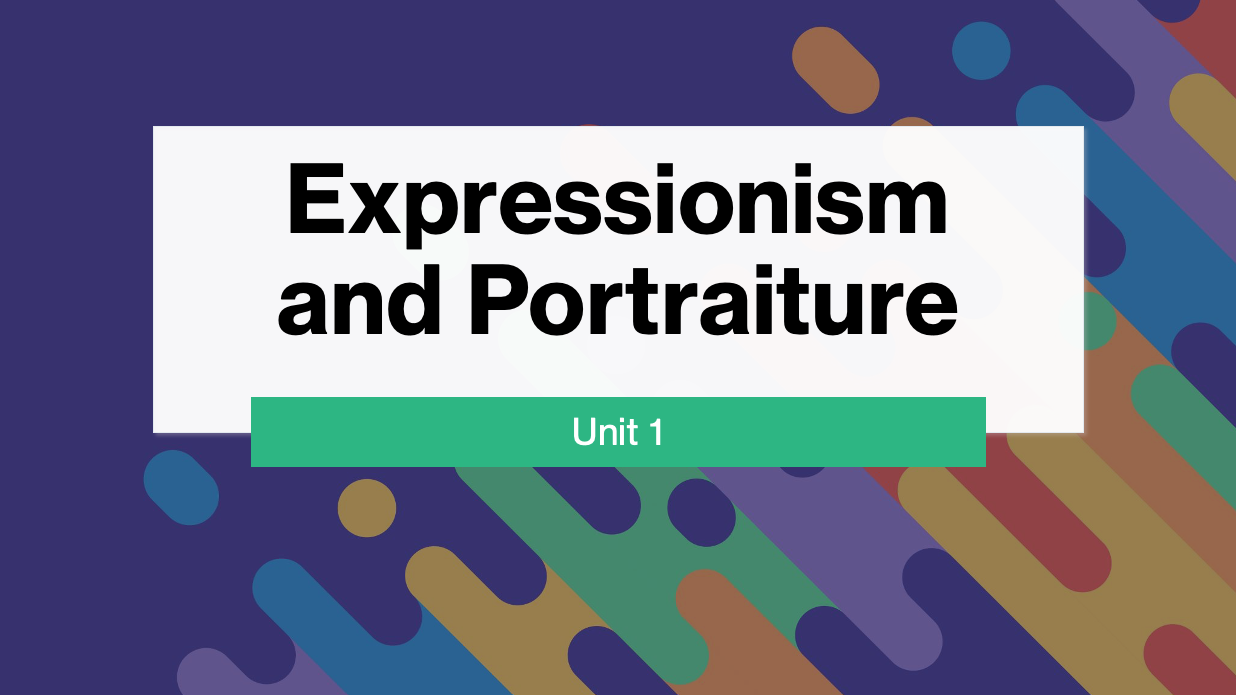
(Marc, 1913)
Lesson 2 - Expressionism and Representation
Duration: 90 minutes
Learning objectives and measures for success:
For students to:
Learn about and understand the themes, history, and techniques/processes of Expressionism
Understand the movement’s significance in communicating meaning, emotion, and themes of identity
Work collaboratively to support their knowledge of Expressionism and its impact in portraiture artworks
Develop a series of self-portraits that convey elements of Expressionism, portrayal, and themes of their identity
Gain a confident understanding of the assessment task/project and what’s required moving forward
Focus code/convention/media form/skill/technique:
Use of Expressionism techniques/processes
Experimenting with materials
Exploring viewpoints and visual conventions of Expressionism
Exploring personal representation
Resources required:
Digital display or projector
Computers
Acrylic paints
Paint brushes
Water cups
Paper towelling
Heavy paper
Dry rack
Lesson Structure:
Curriculum links:
Conceptualise and develop representations of themes, concepts or subject matter to experiment with their developing personal style, reflecting on the styles of artists, including Aboriginal and Torres Strait Islander artists (ACAVAM125)
Manipulate materials, techniques, technologies and processes to develop and represent their own artistic intentions (ACAVAM126)
Plan and design artworks that represent artistic intention (ACAVAM128)
Action 1: Expressionism introductory PowerPoint – 25 minutes
Introduce students to the Expressionism Portraiture PowerPoint presentation, detailing information like its meaning, history, common characteristics, and influential artists. Engage students in questioning and run short group response activity – identity and expression within Van Gogh’s ‘Self Portrait with a Straw Hat’.
Action 2: Making activity – 50 minutes
Part 1:Following their learnings of Portraiture and the artistic movement of Expressionism, students will use their new knowledge to draw and paint a series of 3 self-portraits that reflect and express different moods or feelings. This could be for example, tired, happy, worried, sad, excited etc.
Students should consider implementing art elements and characteristics that are commonly used in Expressionism Portraiture, detailed in the lesson 2 slides. Students will also be required to identify the art elements and elements of portrayal they’ve used in their work.
Part 2: (extender)Using the same themes and theory as part 1, students will draw and paint a self-portrait that represents their identity without incorporating any physical features. This could include aspects of their personality, culture, interests, values, or affinity to place to symbolise and express their true self.
This task should be recorded in their progress folio.
Action 3: Introduction to Assessment task – 10 minutes
Recap and outline the objectives and success criteria for the upcoming assessment task:
students will be tasked to choose a person they know and take a photo of them intending to depict a certain mood, feeling or expression. They should consider the elements of portrayal and themes of expressionism Portraiture to elevate their portrait’s intentions.
Students should look to not only convey the mood or tone but get a sense of this person’s identity. Incorporating themes of place should be highly considered also.
Action 4: Pack up – 5 minutes
Discuss next week’s intentions towards the portraiture task and encourage students to complete short home learning before the next class
Home Learning:
Before next class students should be tasked to develop a demonstrative brainstorm including materials they want to use, intentions, the person they want to photograph, and possible props/themes/expressions/setting etc.
Teacher actions:
Teachers should look to ensure students have a good understanding of Expressionism practices and the requirements of the making activity. Teachers should rotate throughout the room and have focus discussions with groups or individuals while supporting them with the development of techniques/processes.
Assessment strategies:
Diagnostic – class discussion, monitoring levels of progress in making task and engagement with expressionism themes
Formative – observation of understanding, satisfactory completion, or progress in making activity
Summative –
Download here
Differentiation Strategies:
Further time and teaching methods can be applied during collaborative discussion to engage student understanding
Expectations can be adjusted in making task - students focusing on fewer self-portraits with only basic demonstration of expressionism elements
Making activity time length can be extended for those who need it


